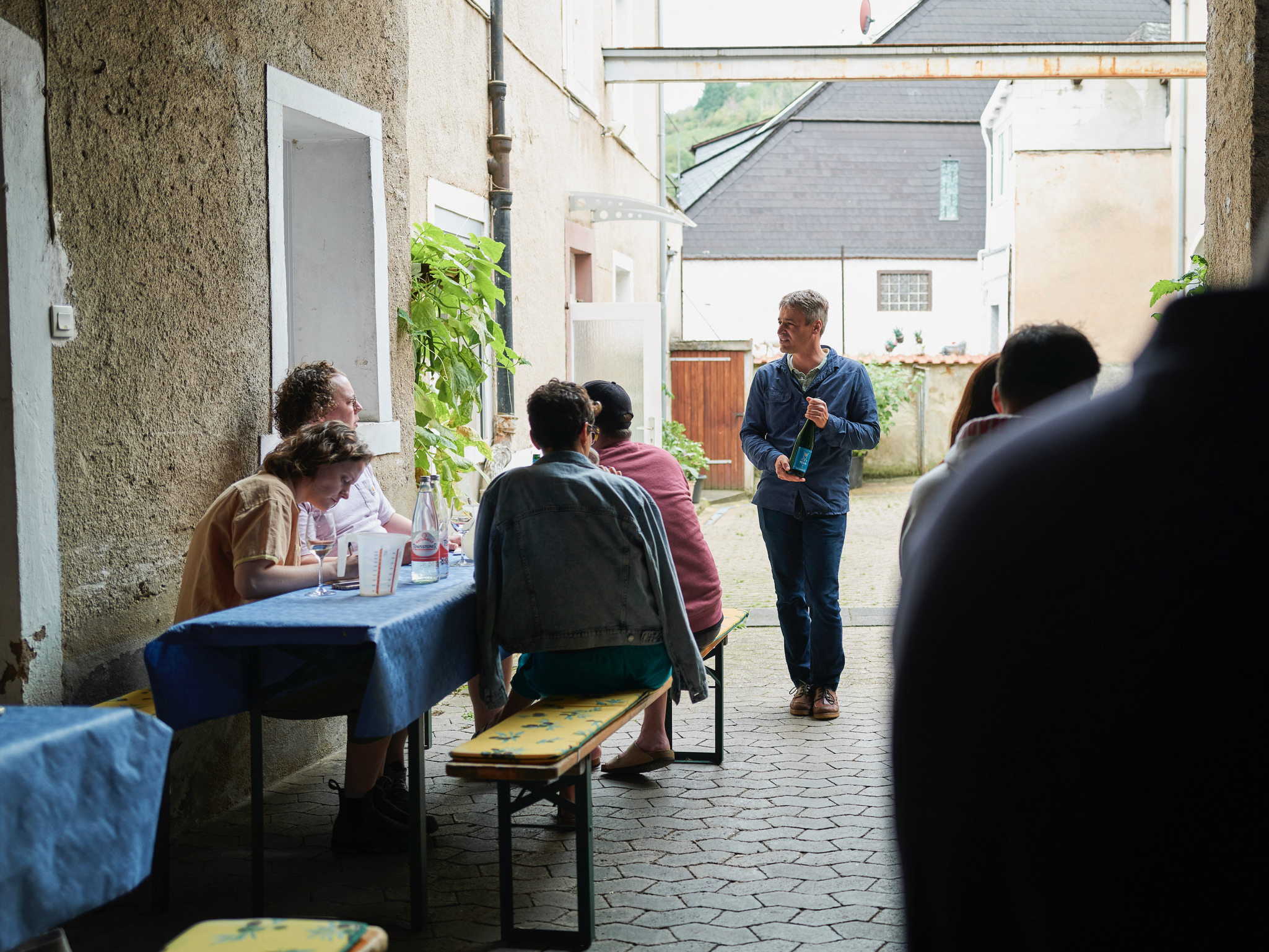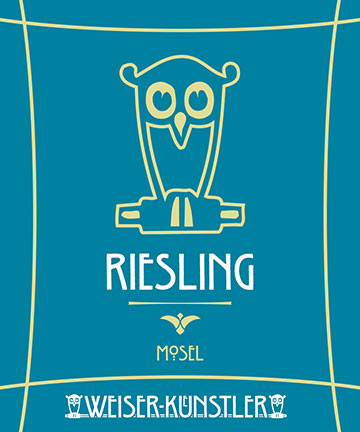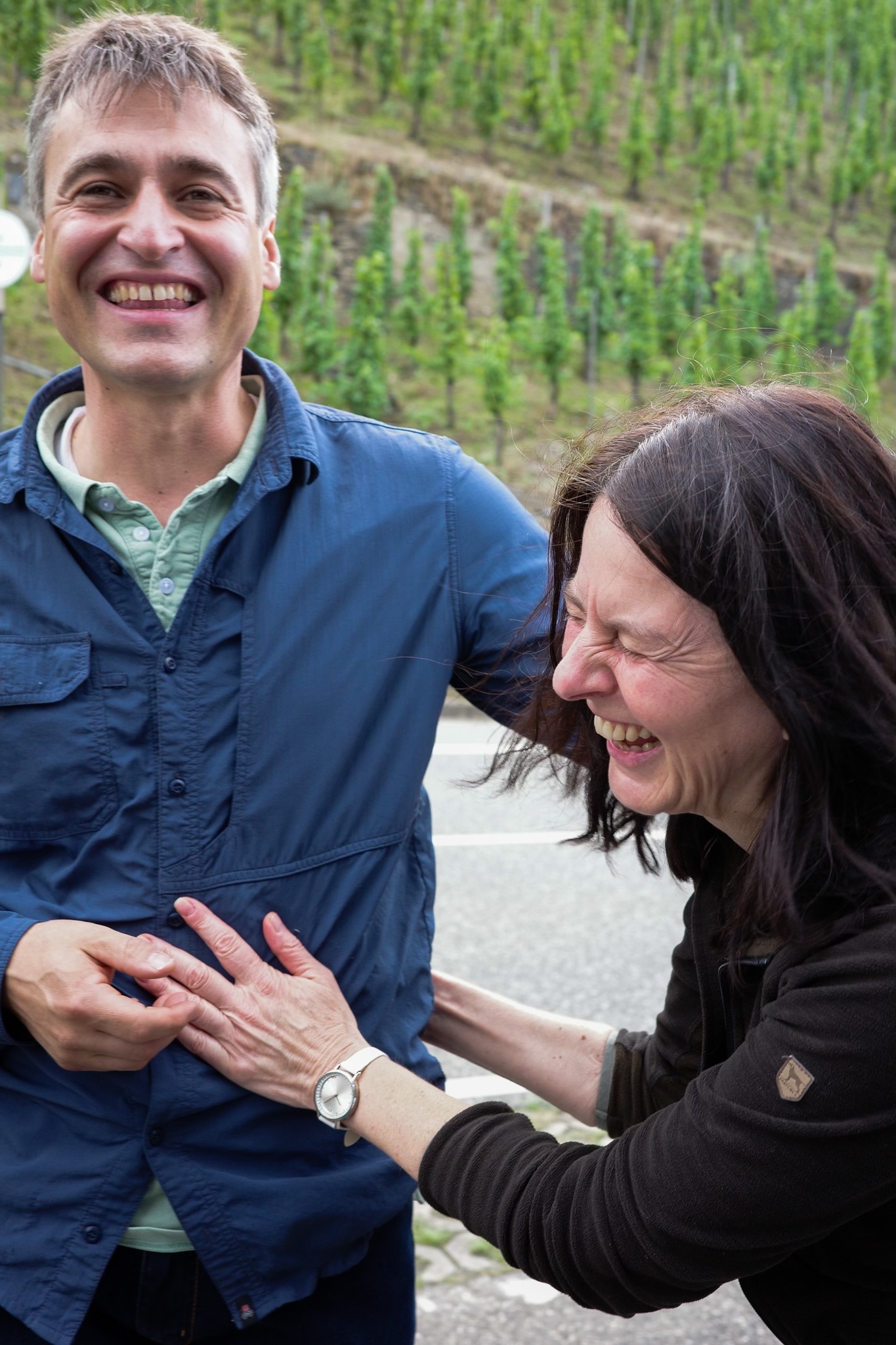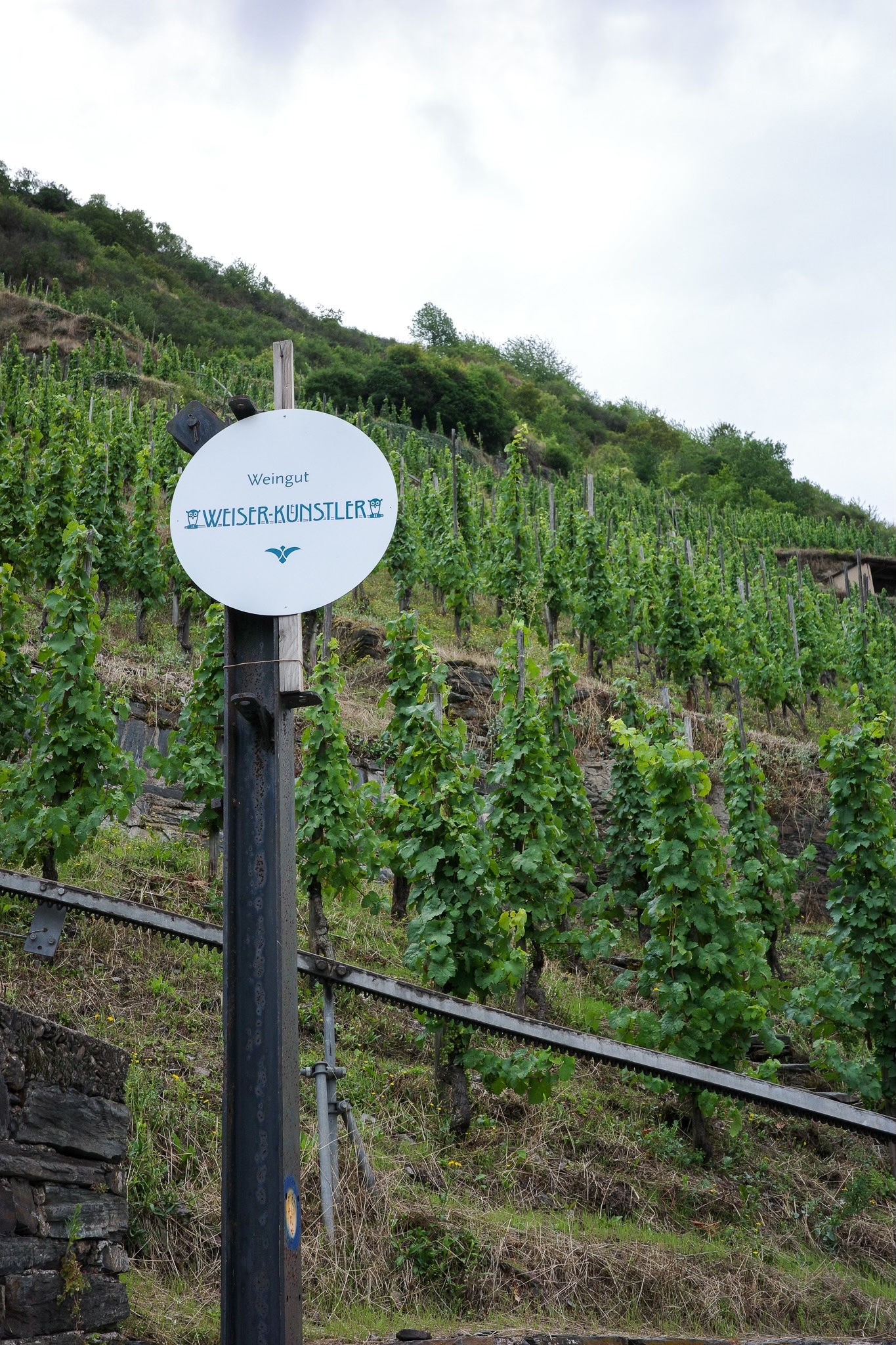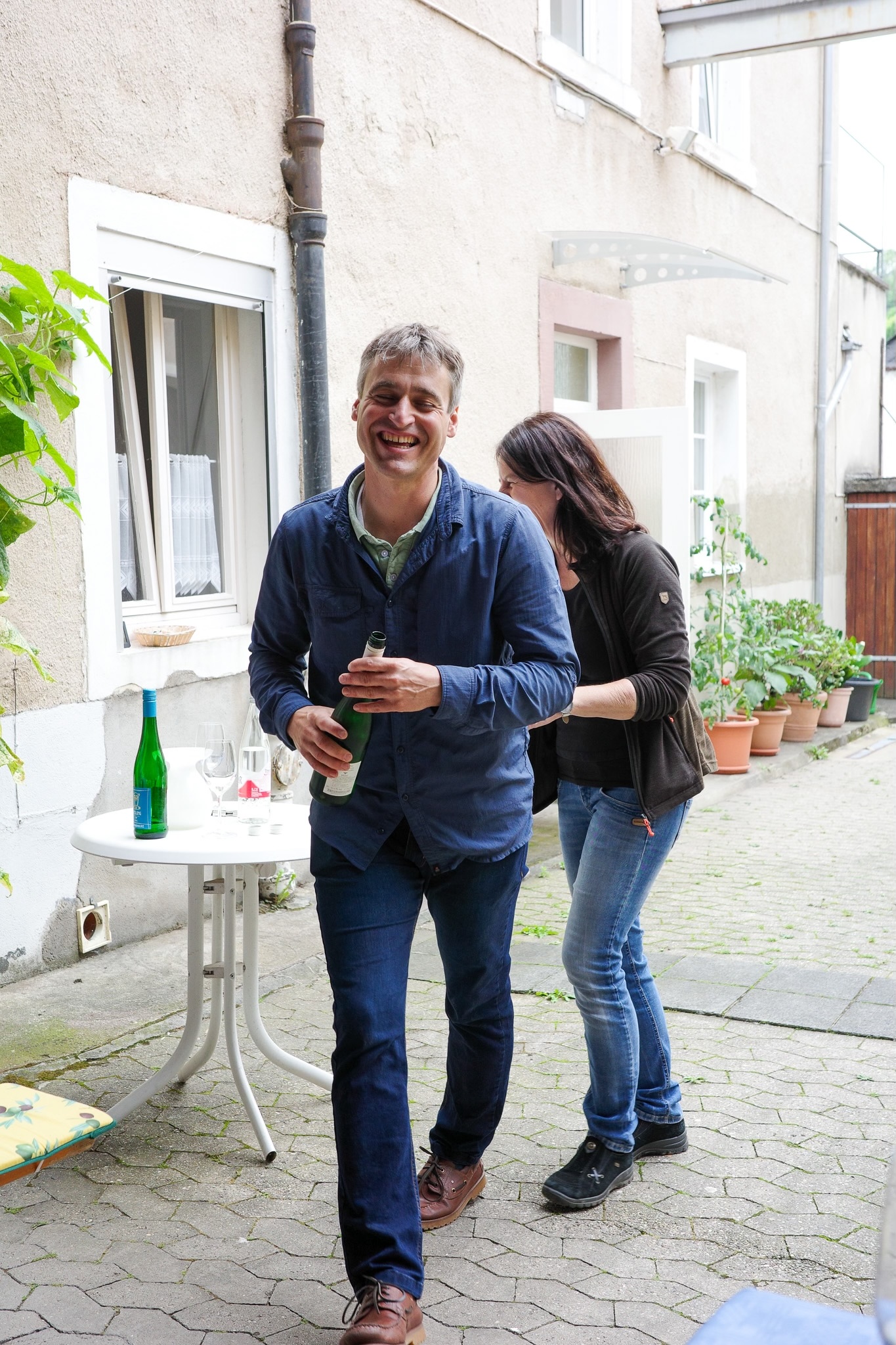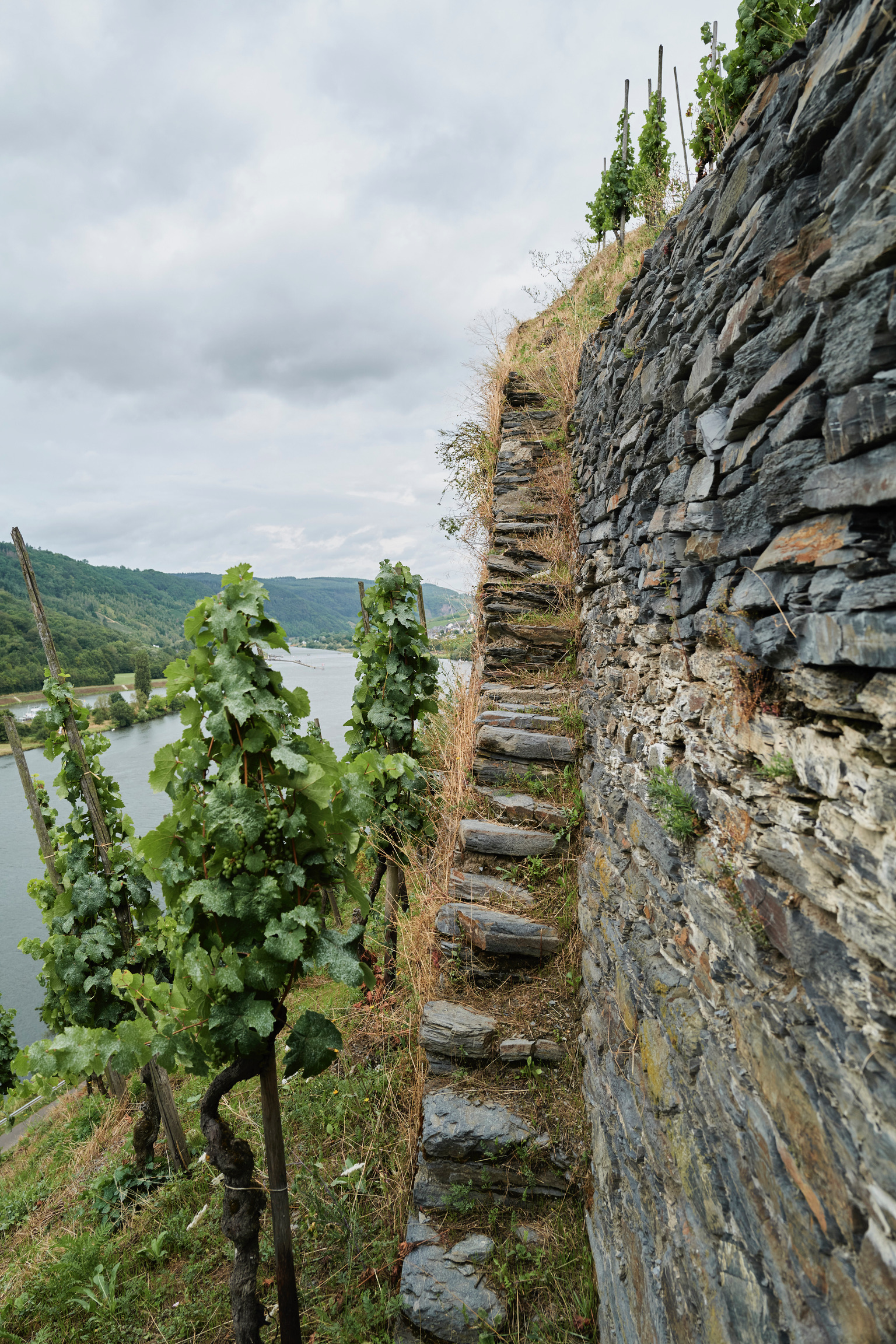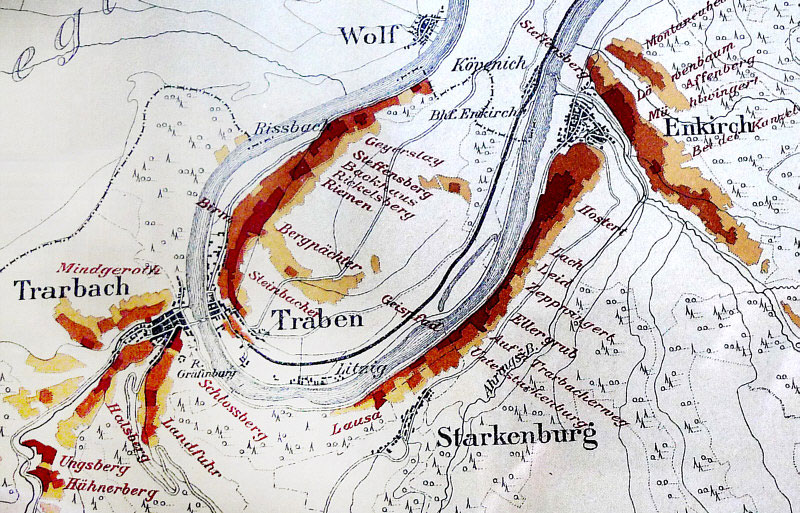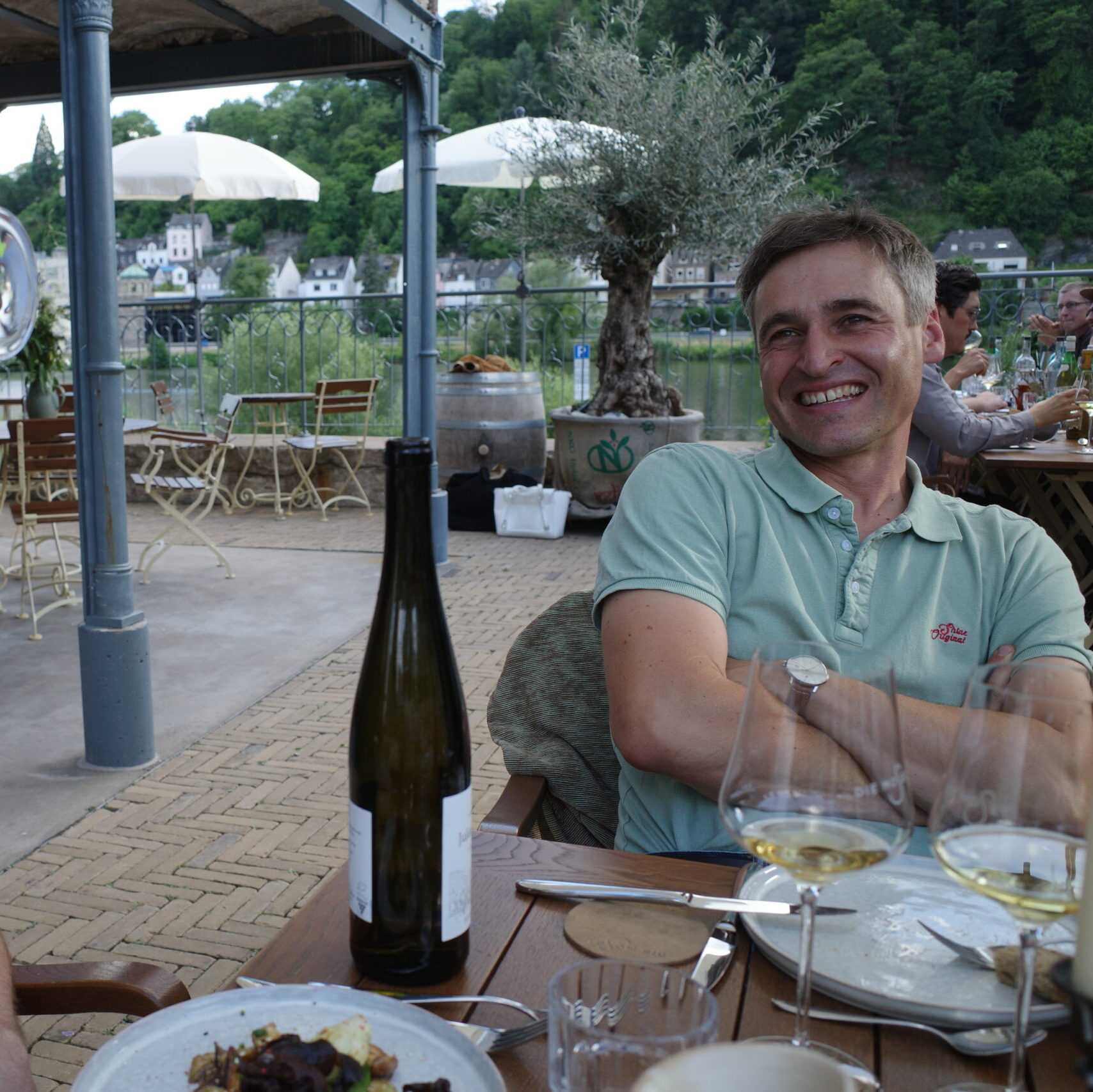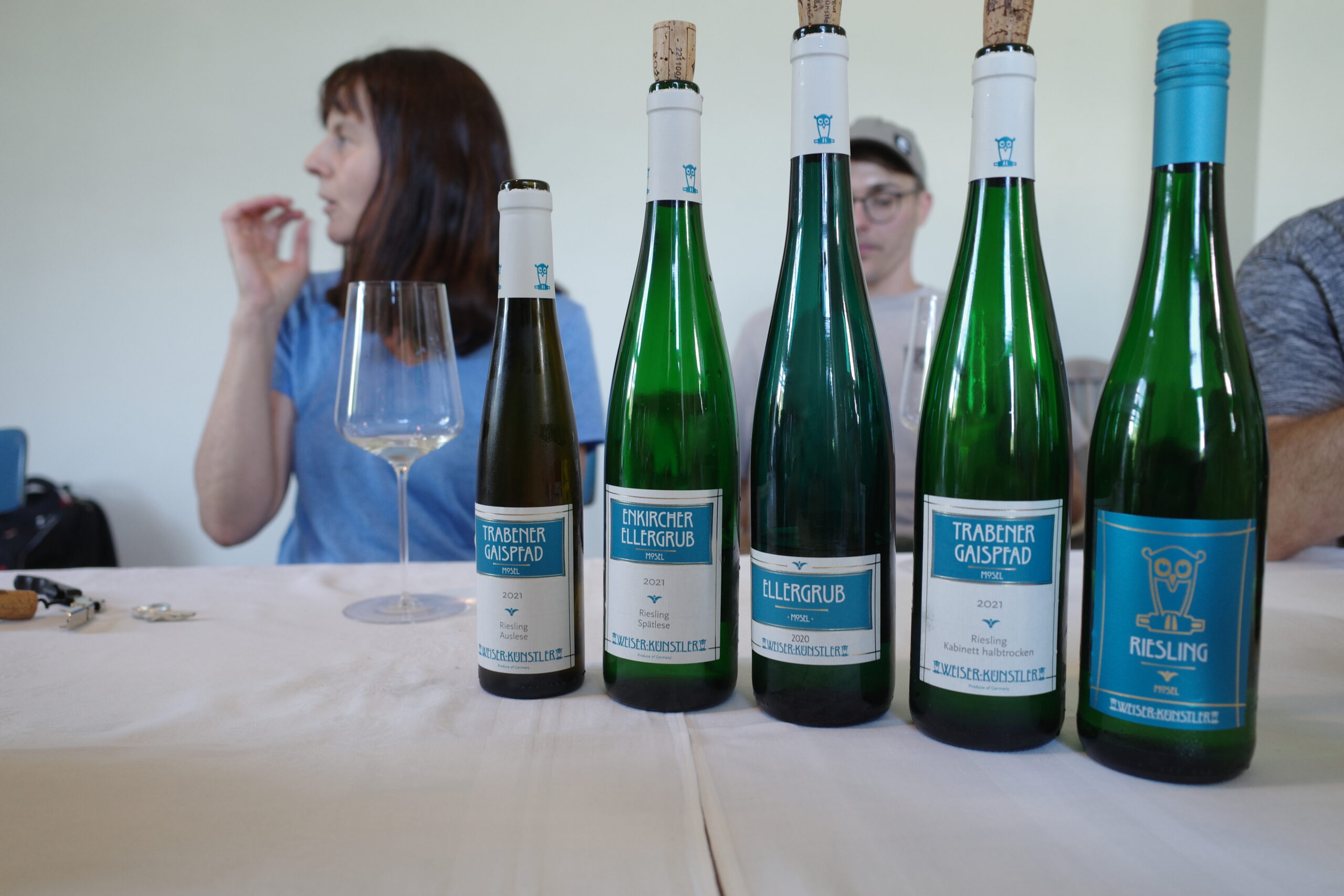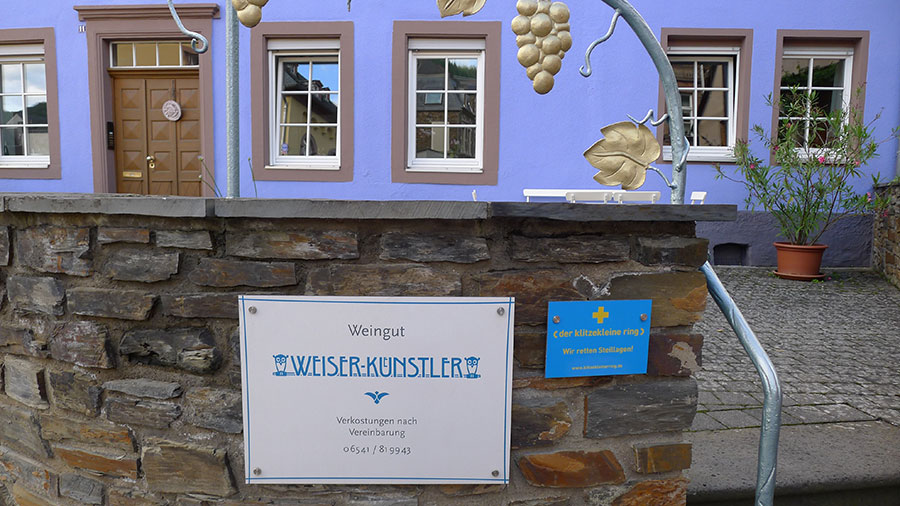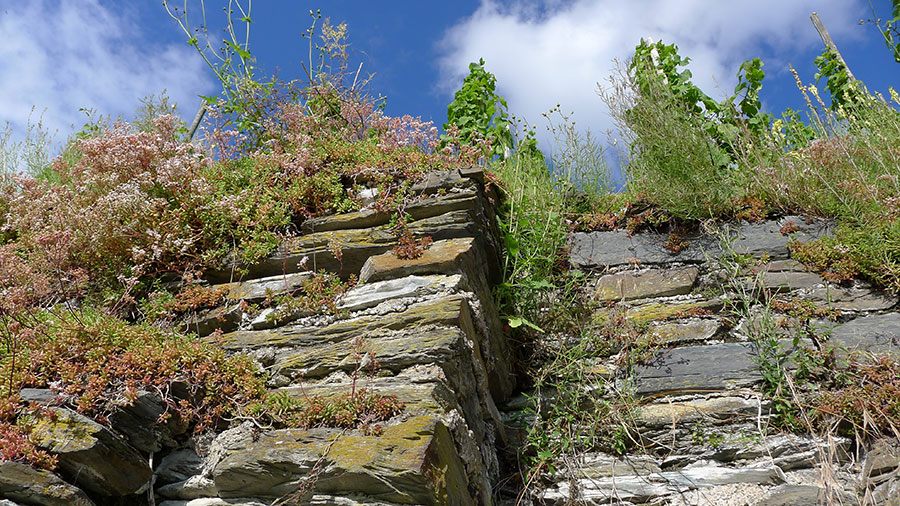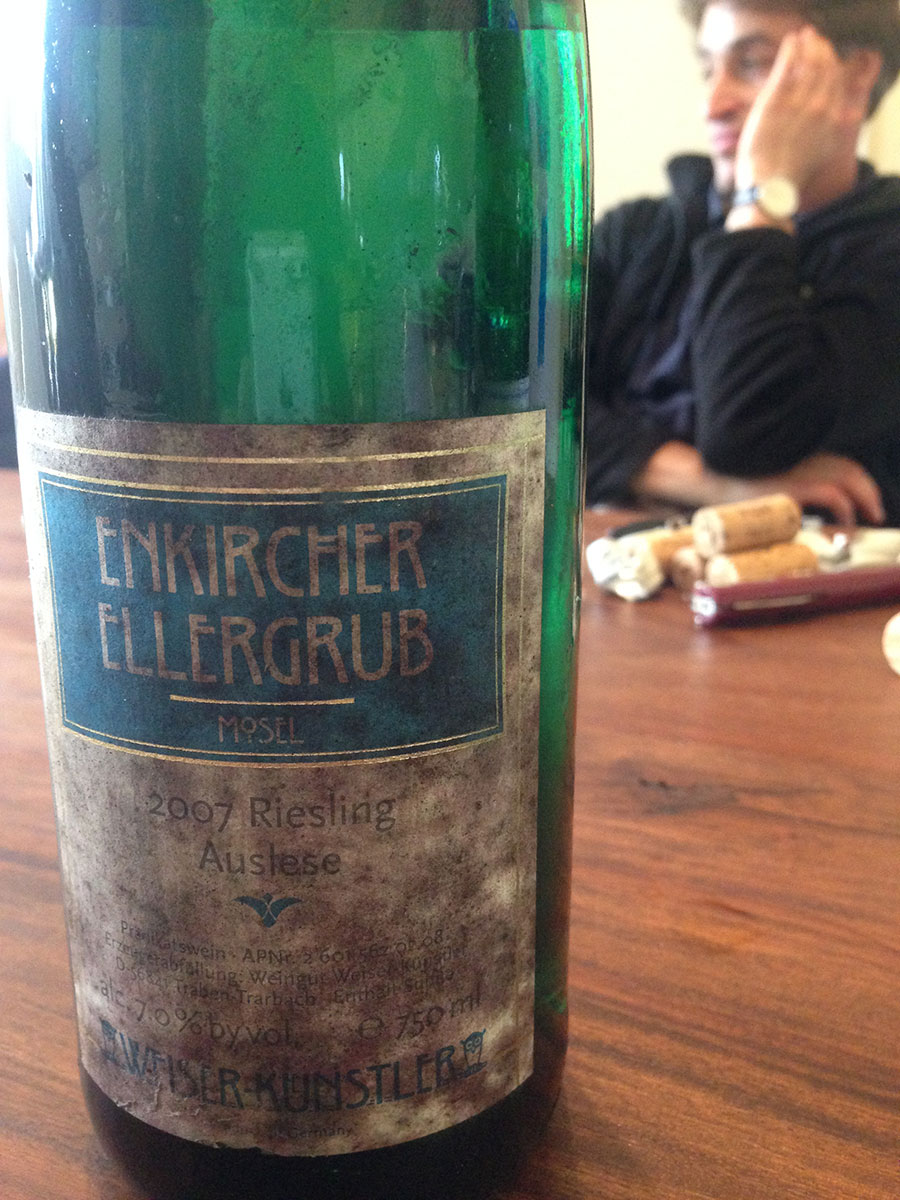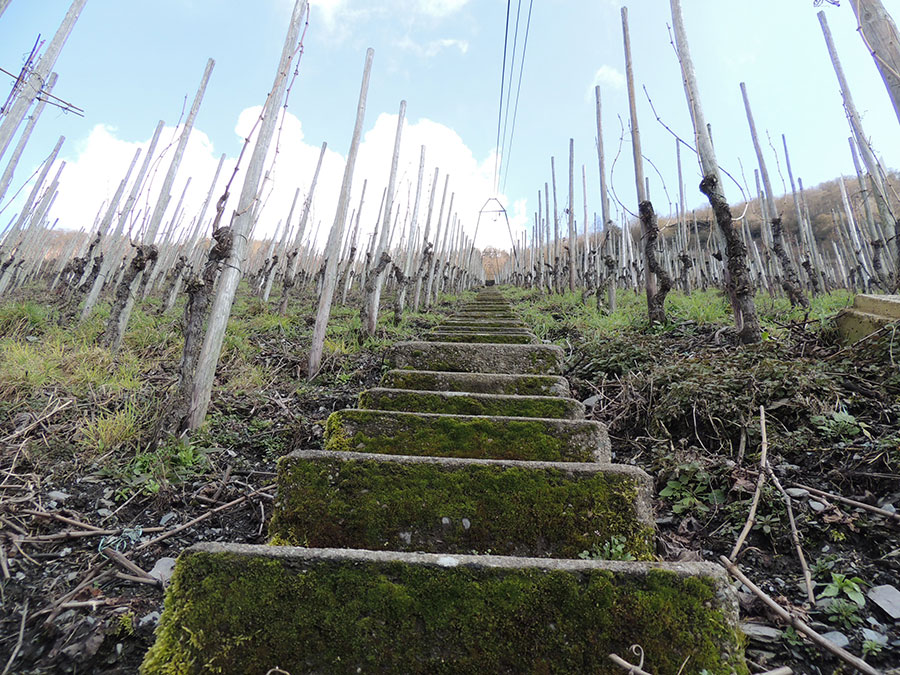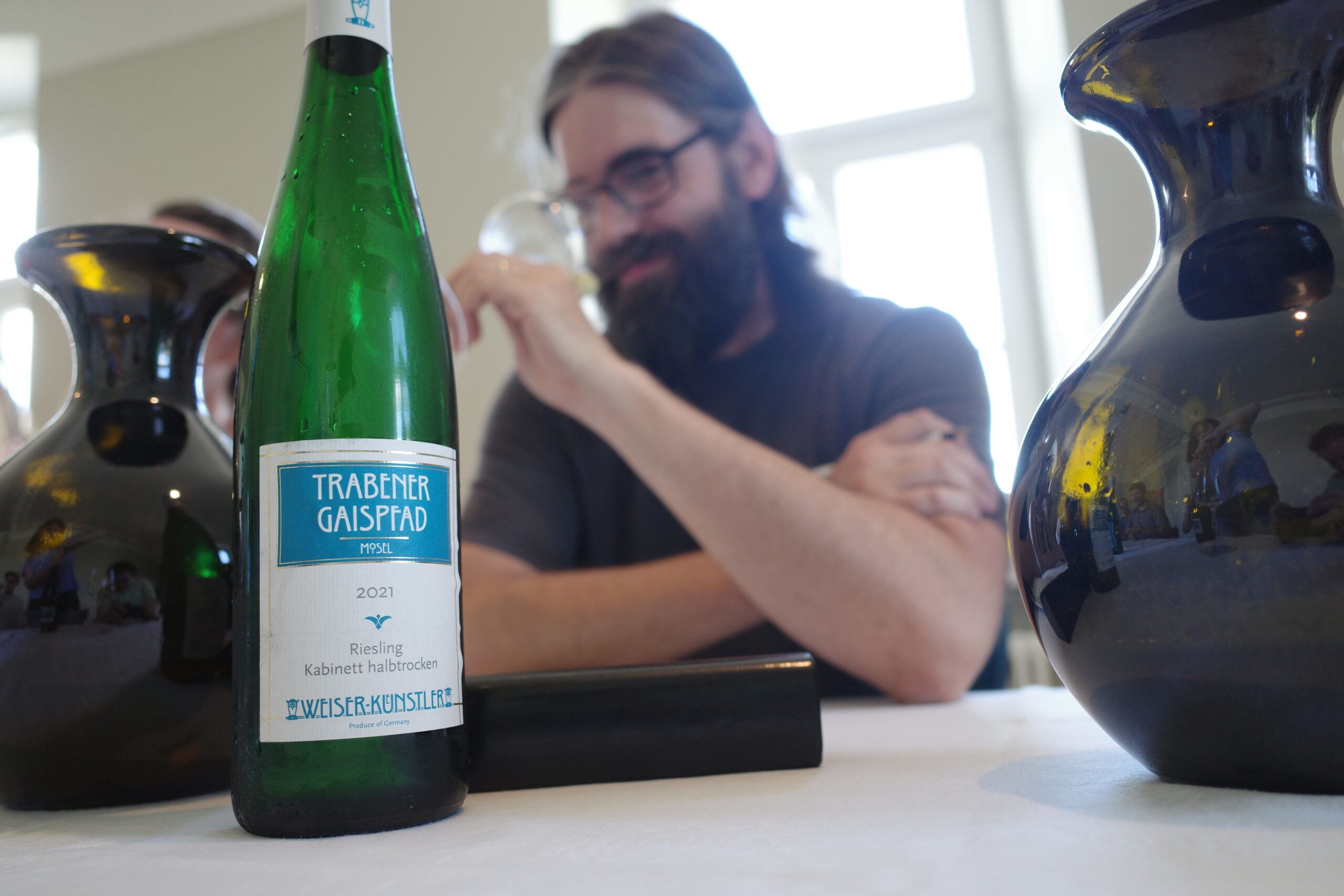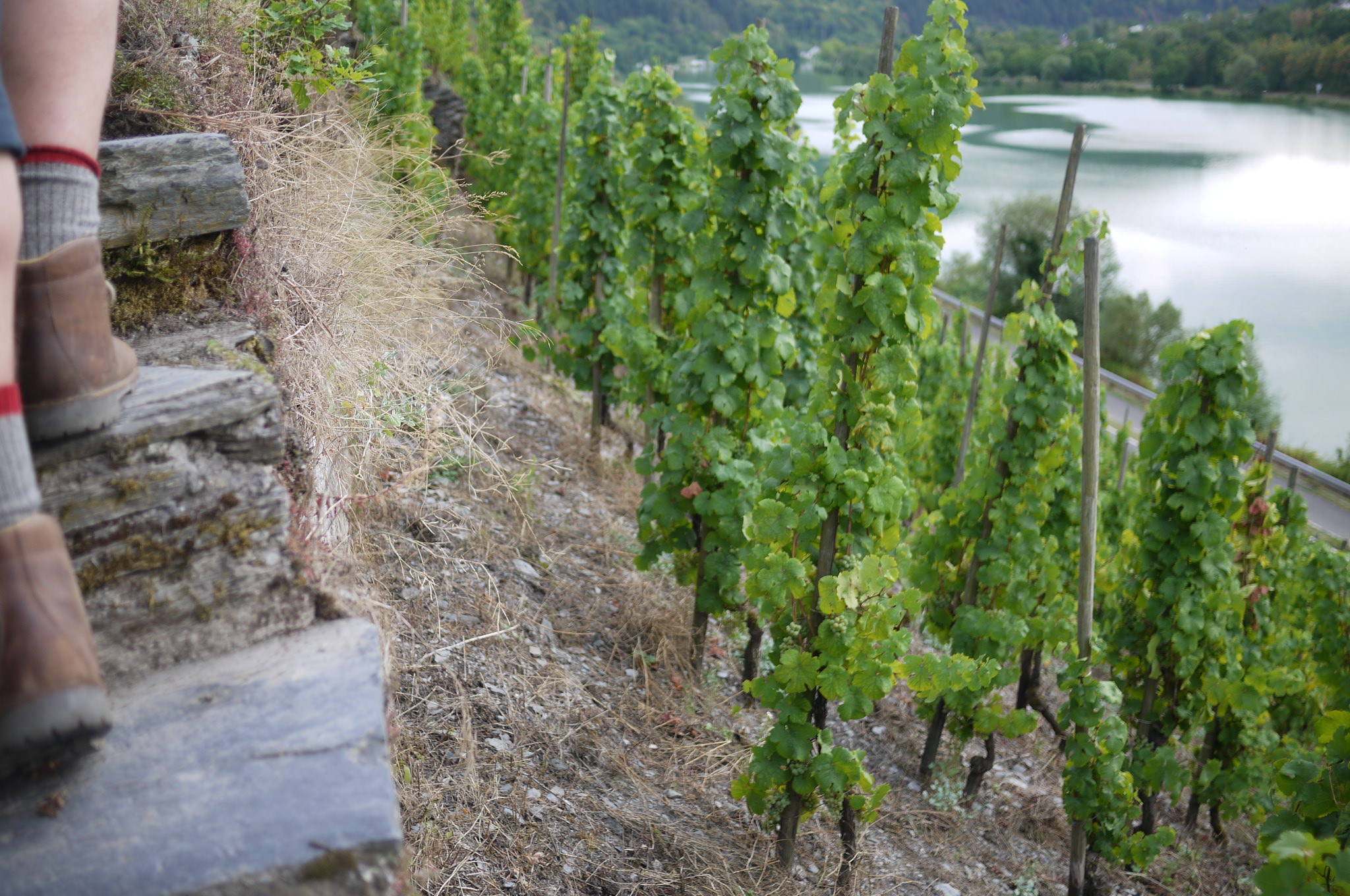“These are consistently among the top wines produced anywhere in the Mosel, made from painstakingly strict selections from prime steep vineyards planted with old un-grafted vines. Yet prices remain moderate… Savvy readers should plunge on these wines.”
-David Rayer & Jean Fish, Mosel Fine Wine Review
At the turn of the 20th century, Traben-Trarbach was one of the wealthiest towns in the Mosel. It was the beating heart of the trade in what were largely considered the greatest wines in the world: Mosel Rieslings. I’ve read that this little village was the second largest commercial center for wine in western Europe, second only to Bordeaux. Much of the grand architecture of Traben-Trarbach was built during this period – the stunning Jugendstil (“Art Nouveau” in French). The Hotel Bellevue which rests majestically along the Mosel is perhaps the most iconic building of the village; in 2013, when these amazing humans decided to work with me instead of the better-known importers that were wisely courting them, we went here to celebrate.
In any event, this era, these glory days, seems to inform much of the feel of Weiser-Künstler. The labels of this estate take their cue from the Jugendstil designers of this age; the font looks as if it’s right out of a Gustav Klimt poster.
More importantly, however, the dawn of the 20th century was the height of fame for the vineyards that Weiser-Künstler now farm. The Lintz map of the Mosel from 1897 (detail to the right) shows the three key vineyards of Weiser-Künstler (Ellergrub, Gaispfad and Steffensberg) all with “Grand Cru” status (click the map to the right to enlarge) though I think it’s a bit simplistic to say that this guarantees any current-day greatness. Plenty of the sites this map declares as “great” are dormant today and questionable regardless; other sites not even declared are today acknowledged as phenomenal.
Still, this trio of vineyards is unquestionably great. This is an awesome and formidable wall of vineyards that people far smarter than I have claimed as among the best in the Mosel.
The simple truth seems to be that in the post-war period, with the trend toward mechanization, these terraced, craggy and ornery vineyards were difficult to work; they just didn’t have any powerful estates singing their songs. Yet the fact that these vineyards fell into obscurity for this period isn’t entirely a bad thing. Because this area was so poor, because it was overlooked, this has saved it in a certain way: These vineyards have simply not seen the “modernization” that many sites in the Mosel have, which means that these cliff-vineyards still have their jutting, ladder-like terraces and on these terraces, they have a high density of very old, un-grafted vines – far, far older than most of the famous sites which were largely replanted with more modern clones through the 1960s, 1970s and beyond.
As but one example: The mighty Ellergrub has a preponderance of ungrafted vines well over 100 years old; the Gaispfad is younger with ungrafted vines only around 80 years old.
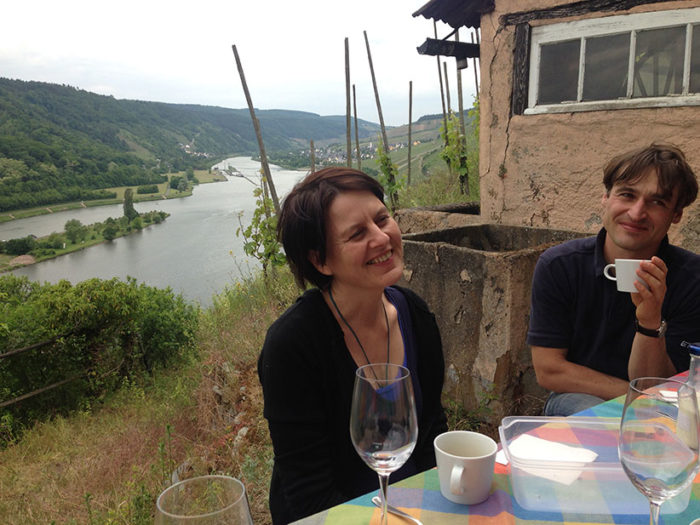
This is a place, literally, where roots run very deep; you can taste that profundity in the wines.
Konstantin Weiser and Alexandra Künstler (pictured above) are as soulful as the vineyards they farm; this is a micro-estate that in around two decades (the first vintage, bottled under the label “Weiser,” was only in 2005) has only grown to around 4.5 hectares, total. Clearly they could get bigger, sell more wine, but… to what end? So far as I can tell, they very literally do everything by hand and want to keep it that way, working their sites organically (they have been certified for some years now) and practicing many tenants of biodynamics. Most importantly, they have that passion and they are in the vines daily. It’s immediately obvious that this is where they’re most comfortable – it’s obvious that they love their vineyards.
This intimacy comes through in the wines. In fact, if we were to point to one producer who carries a similar message of staggering complexity and simple charm, it would be Willi and Christoph Schaefer, though Schaefer’s wines are I think a bit more fruit-driven, a bit more Baroque. Still, both estates are tiny and remain tiny though they could sell far more; both estates seem to easily, naturally make wines that are ethereal, bubbling with purity and subtle nuance. Both estates produce haunting, magical little wines that are worth their weight in gold.
As this general area is lesser known, and filled with quirky and fascinating side valleys, a quick run through the various sites is worth while; check out the Google Earth tour below.
Let’s begin in the famous middle Mosel, what we call the “Hollywood Mile” including the villages of Bernkastel, Graach, Wehlen, Zeltingen and then Ürzig and Erden at the end. When we pull back from here and look down, we see Wei-Ku and their home village of Traben-Trarbach, only a little bit downstream from Erden, directly after the Mosel does a little kick right by Wolf.Their little purple jewel-box of an estate is directly in Traben-Trarbach, right around the corner from the famous Hotel Bellevue, a classic example of the Jugendstil style of Architecture.
From Traben-Trarbach we move upstream a bit to the village of Wolf – home to their friend Daniel Vollenweider’s top sites including Goldgrube and Steffensberg. While Vollenweider’s two sites line the river, forming a dramatic amphitheater, Weiser-Künstler’s Wolfer Sonnenlay is tucked into a side valley behind the village; you’d almost miss it if you weren’t looking. They farm about half a hectare in this warmer site with its southern exposure and dramatic incline; they began in 2015. The Sonnenlay is a drier site with 50-year-old vines on gray slate; because of the age of the vines and the dryness of the site it does not have tremendous vigor. Yet, a cool wind blows in from the forests to the east and so the diurnal in the vineyard is dramatic: the hot days are countered by quite cold evenings. In a way, this is perhaps the most “middle Mosel” of all their vineyards – the wines do not have the aggressive acidities of some of the sites further downstream. Konstantin believes this to be a Kabinett vineyard par excellence though I’ve been impressed with the Spätlese in the years that they’ve made it.
Floating downstream back to Traben-Trarbach the first plots that should catch our attention will be on the right, in the side valley that wraps around the town of Trarbach. On the left side as we look up this valley is the Trarbacher Schlossberg; here Wei-Kü farms just over half a hectare. They began farming this plot in 2016 though the first wine to have “Schlossberg” on the label are from 2018. This is a blue-slate site with a westerly, south-west exposure. This too they consider largely a Prädikat site, meaning it most often produces a Kabinett or Spätlese. Now, on the other side of this side valley sits a sneakily important site for Weiser-Künstler called the Trarbacher Taubenhaus; at 0.7 hectares this is their single largest holding in any one vineyard after the Ellergrub. This is a uniquely east-facing site with plenty of water (you can see the rich forest up behind the vineyard). It is also one of the coolest vineyards they farm – in fact in 2020 they made some sparkling wines from the vineyard. Perhaps the Wei-Kü expert among you will think to yourself, “I’ve never seen a wine from Wei-Kü labeled ‘Taubenhaus’ – why?”
When I asked Konstantin this he laughed and said, “good question.” It more or less seems to come down to the fact that 1) the vineyard name is a bit unpleasant in German (the translation would be “pigeon house”) and 2) they use this vineyard in many different ways, so for the moment having it remain a bit anonymous is beneficial. This is the site from where the village-level “Trarbacher” wine can come from; the site also gives a good amount of grapes toward the very-serious estate wine.
Finally, floating further downstream we come to the trio of Grand Crus that has made and solidified the reputation of Weiser-Künstler. First we come to the iron-rich Gaispfad, a uniform yet very steep rectangle of vines 80+ years old and largely ungrafted. Alexandra and Konstantin farm about 0.6ha in this site. Next, the Ellergrub. This is one of the most dramatic sites in the Mosel, with angular terraces jutting out in different directions and ungrafted vines well over 100 years old. Weiser-Künstler farms around 1.8 hectares of this site. It is their largest holding, by far, yet the yields here are miniscule. Though it may be hard to find top parcels for sale these days, when they began decades ago these sites were available and relatively cheap. The work is so extreme and the yields so low that no one wanted to work them.
Finally, when we float down to the next village, Enkirch, we come to another side valley. Tucked into this valley, again with a southerly direction, is the Grand Cru Steffensberg. There is a bit more weathered slate here, a bit more soil and vigor; this site produces Wei-Kü’s most textural and rich Grand Cru – though we are talking about Wei-Kü so when I write “rich” I still mean more lithe than nearly 90% of the other wines made in the Mosel. There is nothing Weiser-Künstler does that isn’t shocking in its clarity and finesse. You’ll also note the small prime parcel within the Steffensberg known as “Im Löwenbaum” which they will bottle seperately some vintages—in 2019 an Auslese and in 2020 a dry wine.
Across the board at Weiser-Künstler, as at Willi Schaefer, the Prädikat wines are rigorous and old-school: Kabinetts with true delicacy and lightness, Spätlesen with vigor and depth, Auslesen with flair, and true food-friendly “stickies” with more of it all. However, Weiser-Künstler also makes incredible dry wines – dainty angels carved from mineral and slate that feel like porcelain in their weight and purity.
In other words, Weiser-Künstler does it all, and does it all beautifully.